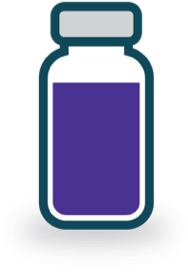- Serious digoxin toxicity can cause hyperkalemia; administration of potassium supplements in these patients may be hazardous. After treatment with DIGIFab, serum potassium concentration may decrease rapidly and must be monitored frequently, especially during the first several hours of administration.
- The clinical condition of patients with poor cardiac function may deteriorate secondary to the withdrawal of the inotropic action of digoxin by DIGIFab. If needed, additional support can be provided by using other intravenous inotropes such as dopamine, dobutamine, or vasodilators.
- Care must be taken not to aggravate digoxin-induced rhythm disturbances. Restoration of digoxin therapy should be postponed, if possible, until Fab fragments have been eliminated from the body, which may require several days; patients with impaired renal function may require 1 week or longer.
Calculate the Appropriate Dose to Neutralize Digoxin
The Factors That Impact DIGIFab Dosing
- DIGIFab dosing varies according to the nature of toxicity (acute vs chronic), the patient’s age and weight, and the amount of digoxin to be neutralized
For patients with a known or estimated amount of digoxin in the body, use the DIGIFab dose calculator.
Acute Ingestion, Unknown Amount*
Acute Ingestion, Known Amount*
Chronic Toxicity, Unknown Serum Digoxin Level
DIGIFab
Dose

- Adults and children ≥20 kg
6 vials (240 mg) - Infants and children <20 kg
1 vial (40 mg)
Chronic Toxicity, Known Serum Digoxin Level
*Suicidal ingestion may involve more than one drug. Toxic effects of other drugs or poisons should not be overlooked.
- The reconstituted product should be used promptly. Unused product may be stored under refrigeration at 2° to 8°C (36° to 46°F) for up to 4 hours.
For complete dosing information, please see the full Prescribing Information.
Watch this video to review the recommended dosing for DIGIFab.


